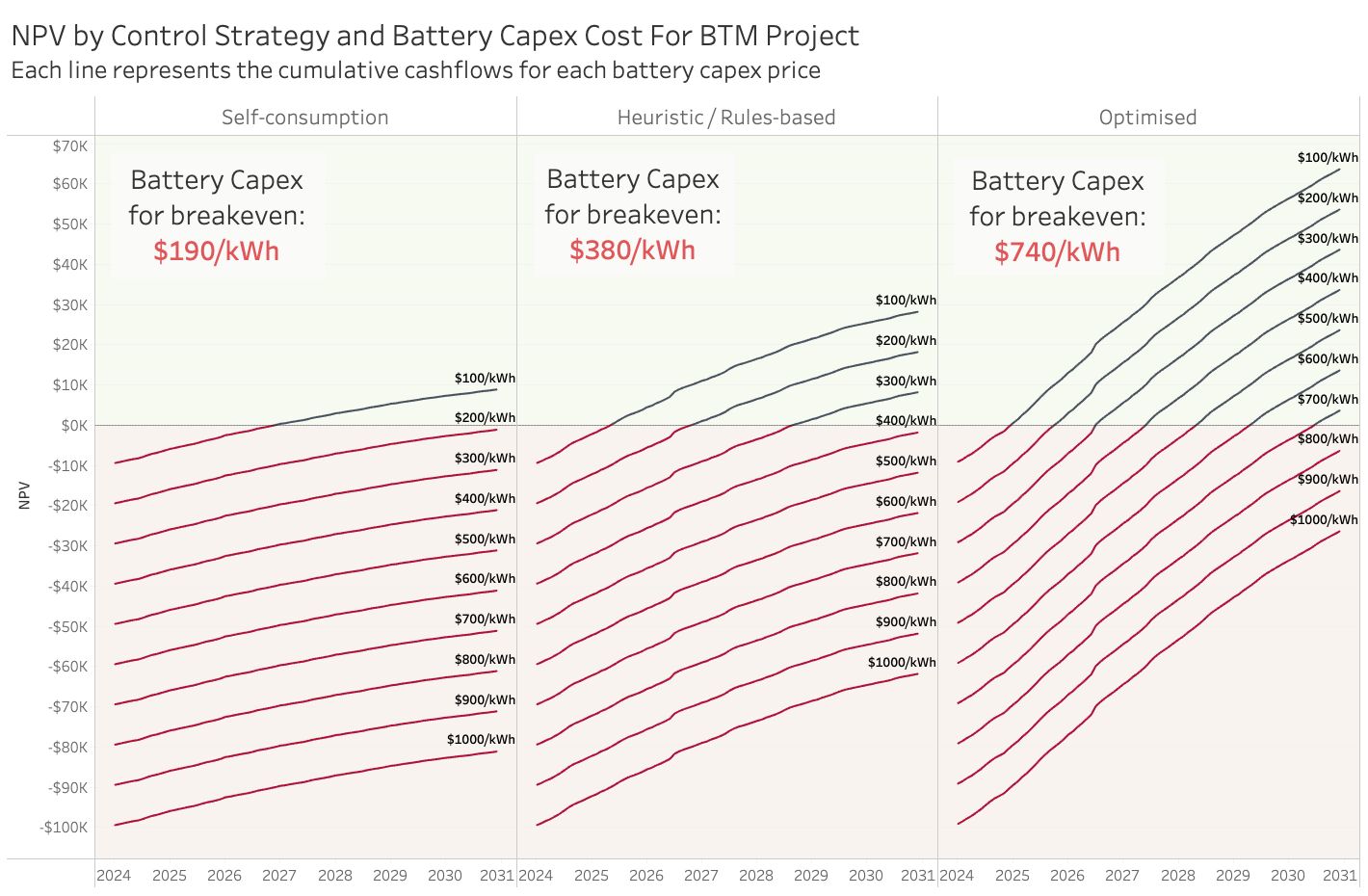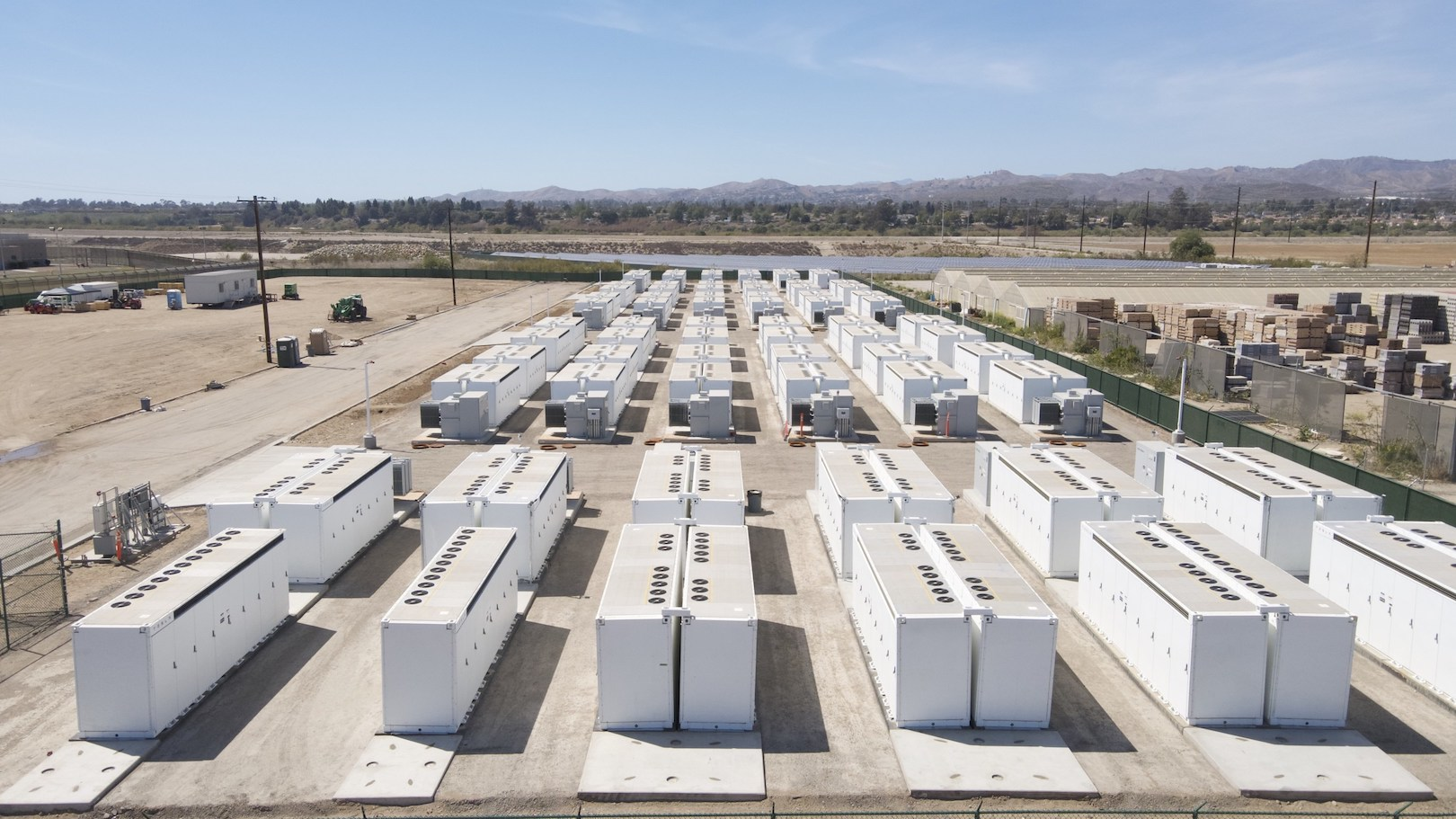Frequency control is a lucrative source of revenue for battery owners but participation in Regulation services also requires material energy throughput, increasing the degradation of the asset and adding complexity to wholesale trading


Two questions we hear often at in the context of battery storage investments, particularly smaller-scale projects located within the distribution network are:
1. How cheap do batteries need to be to be “in the money” for any given project?
2. How much does the battery control strategy matter? On this point there’s often a view that using the battery to maximise self-consumption of solar is the most sensible thing to do, but is it really?
The questions are interrelated & in this post I’m having a crack at answering both at the same time using a common behind-the-meter use-case for the purpose.
I used Gridcog to build a simulation of a small BTM BESS co-located with solar & load, the kind of setup you might see for commercial energy user.
The baseline scenario just includes our site load plus a pre-existing solar system priced against the businesses' assumed energy supply arrangements. The alternative scenarios model the impact of adding battery storage with a view to answering questions 1 & 2 above.To test the impact of different control strategies I've run near-identical versions of the site where the only thing that varies is the way the BESS is controlled. We’re using three strategies:
☀ Solar self-consumption: battery charges off available solar that would otherwise be exported to grid & discharges into site load.
⏱ Simple heuristic or rules-based approach: an average curve for energy supply costs is created for each day of the week & fed to the battery. The battery then operates to reduce these costs
🤓 Full optimisation: the battery is continuously fed a forecast of site load, solar yield & wholesale prices, as well as the structure of the network tariff, & operates to reduce these costs.
To test the impact of different battery capex costs I've run each variation against a range of battery capex costs starting at AUD$1000/kWh all the way down to $100/kWh. What we’re looking to find is the capex cost that delivers us a breakeven project for each control strategy.
🏗 Model setup:
- Our site is located in Sydney, Australia
- Site load consumes 670MWh a year with peak demand of 227kW
- Solar is 300kWp & generates 407MWh pa of which 113MWh is exported back to the grid
- For energy supply costs the site is exposed to the wholesale market using the central case forecast from Endgame Economics, plus a 5% mark-up as a proxy for retailer costs.
- For DNUoS, site is connected to Ausgrid on network tariff EA305
- For certificates we have LRECs, SRECs & ESCs.
- Battery is 100kWh/50kW with 90% depth-of-discharge, 85% round-trip-efficiency & 2% degradation per year
- Model duration is 7 years, from 2024 to 2030. Duration based on max payback period a business customer might accept
📈 Model highlights:
- Control strategy has a huge impact on the commercial outcome
- Solar self-consumption is only economic with a battery cost of $190/kWh
- Optimisation delivers more the 2x the value of a simple, rules-based approach


Frequency control is a lucrative source of revenue for battery owners but participation in Regulation services also requires material energy throughput, increasing the degradation of the asset and adding complexity to wholesale trading


Unlock the potential of hybrid solar and battery storage systems with our deep-dive into DC-coupled systems. Learn how they work, their advantages, and how they can increase energy exports and boost project revenues. This detailed guide provides insights into modelling complexities and how Gridcog can help you navigate and compare different solutions for effective decision-making in the clean energy sector


Comparing the commercial performance of a two hour and eight hour duration grid-scale battery in Australia's NEM
